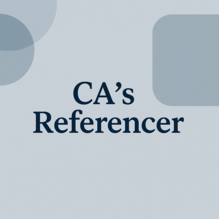Three ways AI is shaping the future of tax
October 31, 2025
AI has been making slow progress in the accounting world for years, but the launch of ChatGPT at the end of 2022 significantly accelerated its progress. While tax and accounting departments initially proceeded with caution, attitudes are now starting to change.
Concerns about accuracy, hallucinations, and client data security remain, but accounting professionals’ eyes are being opened to the possibilities of AI and how it can safely and effectively transform their workloads. For example, instead of spending hours manually inputting data or drafting emails, AI is beginning to streamline these processes, allowing professionals more time to focus on higher-value and more strategic tasks.
As the industry transitions from experimentation to official implementation, organisations are seeking more advanced use cases, eager to explore further possibilities of AI. Whilst the sector will likely proceed with caution, rather than experiencing a radical change in the short term, benefits to those who take the leap will become increasingly apparent.
From idea to action
More use cases for AI are appearing almost daily as the technology continues to advance. As it stands, the apparent examples can be summarised into three categories:
1. Automating manual tasks
The automation of manual, repetitive tasks has been a use case for AI for a while, long before the boom of Generative AI. However, the reasoning models within large language models (LLMs) have given it new life and opened up more possibilities.
Even over the past couple of years, this technology has undergone significant improvements. AI doesn’t just repeat predictable patterns or follow instructions; it can break down complex problems into steps and possesses human-like thinking mechanisms.
In a tax and accounting context, this means that today’s tools can not only do the repetitive number crunching and data entry, but also analyse trial balances, identify anomalies, and flag them for human review, as well as draft tailored responses to client requests.
This is revolutionary for teams when it comes to time savings – what previously may have taken hours can be completed in minutes. Instead of doing the manual work themselves, the professional simply has to review and refine the output. These time savings have a significant impact on an organisation’s productivity and mark huge improvements in job satisfaction as professionals can apply their skills and knowledge critically, without having to generate the output from scratch themselves.
2. Conducting in-depth research
The accounting world is full of complex issues, whether it involves cross-border structuring or regulatory changes, like Pillar Two; accountants must stay up to date with any changes on the horizon. This can be a challenging and time-consuming process, but AI can assist.
Tax has long been predicated on the production of thousands of pages of information and opinion from experts. LLMs can take this information and produce specific tax tools that are tailored to answering queries in particular areas of tax. This means professionals now don’t need to spend hours collating sources via a search engine – they can use a tax-specific tool to draft a first pass of an answer. And whilst it will still need to be reviewed before being sent, the efficiency gains are significant.
3. Thinking autonomously
The next advancement that we will see is Agentic AI. Unlike earlier models or traditional Robotic Process Automation (RPA), which strictly follow scripted logic, agentic AI can execute tasks with reason and autonomy.
This levels up previous AI technology so rather than being a “helper bot”, Agentic AI models can mimic how a junior employee would work. It can understand context, identify anomalies, and where older models would have stalled and flagged it for human intervention, Agentic AI will investigate the issue and initiate the correct workflow. An example of this is managing VAT invoices: AI agents can be deployed to identify missing documentation, chase the appropriate contacts, and even adapt and personalise their emails, depending on who they are being sent to. This could include translating messages into different languages or taking time zones into account when sending them. Whilst many will still want humans ‘in the loop’, we are likely to see more and more agents operating near-autonomously.
Another distinguishing characteristic is that Agentic AI has the ability to communicate and collaborate with other AI agents. This allows whole teams of agents to work on tasks, overseen by just one human professional. With the ability to communicate, AI agents can also train other agentic AI models. This is another huge time saving as organisations only need to provide intensive training to one AI model in each specific role and deploy it as the ‘expert’ agent, who can then guide and train other agents, monitor their progress and suggest corrections if they get stuck.
The human role in the AI age
With these developments on the horizon, it is understandable that fears arise around human replacement. But embracing AI is all about enhancing human productivity, not replacing them. With AI conducting the time-consuming tasks, professionals are freed up to focus on higher-value and more strategic activities.
In fact, current research suggests that AI is improving job satisfaction and boosting employment numbers, not reducing them. It is making the world of accounting a more attractive career choice, with 40% considering a career change to accountancy if they could use AI to replace routine tasks, and 80% of current accountants agreeing that automation will make their jobs easier.
The real opportunity for tax and accounting isn’t choosing between humans or AI – it’s unleashing the power of both together. When professionals harness AI, they don’t just work faster but deliver more value than ever before.
[Accountancy Today]


